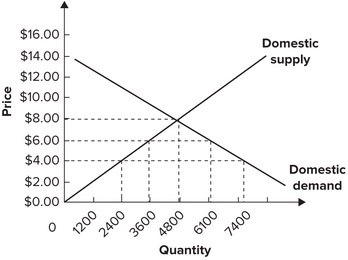When numerous Japanese companies buy $100,000,000 worth of goods or services from U.S. producers, ceteris paribus, there will be
A) appreciation in the value of the yen against the dollar.
B) depreciation in the value of the yen against the dollar.
C) depreciation of the dollar against the yen.
D) no change in values of the currencies.
B
You might also like to view...
Which of the following statements about the structure of the Fed is an advantage from the perspective of conducting monetary policy?
A) The two policymaking bodies of the Fed are deliberately large to allow for different viewpoints and they work very closely with other political institutions. B) The two policymaking bodies of the Fed are deliberately large to allow for different viewpoints and they work relatively independently of other political institutions. C) The two policymaking bodies of the Fed are small to allow deliberations in private and they work relatively independently of other political institutions. D) The two policymaking bodies of the Fed are small to allow members to work closely with other political institutions.
Which one of the following statements is NOT accurate in relation to the responsibilities of the board of directors of a? corporation?
A. Directors are often paid a combination of an annual fee and stock? options, and the right to buy company shares at an advantageous price. B. Boards are typically composed of major? shareholders, philanthropists, and executives from other corporations. C. Much of the attention focused on corporate reform in recent years has zeroed in on boards being not too closely allied with management. D. As the representatives of the? shareholders, the members of the board of directors are responsible for selecting corporate officers. E. Much of the attention focused on corporate reform in recent years has zeroed in on boards failing to add enough value to strategy planning.
Answer the following questions true (T) or false (F)
1. The level of saving in the economy is equal to the level of income times the marginal propensity to consume. 2. Partial equilibrium refers to the equilibrium level of GDP in the economy. 3. National income is equal to wages, rents, interest and profits.
Refer to the graph shown for a small country that is a price taker internationally. Assume the foreign supply of this product is perfectly elastic at a price of $4 per unit. If government imposes a tariff in the amount of $2 per unit, it will collect revenue in the amount of:
Assume the foreign supply of this product is perfectly elastic at a price of $4 per unit. If government imposes a tariff in the amount of $2 per unit, it will collect revenue in the amount of:
A. $5,000. B. $2,400. C. $10,000. D. $0.